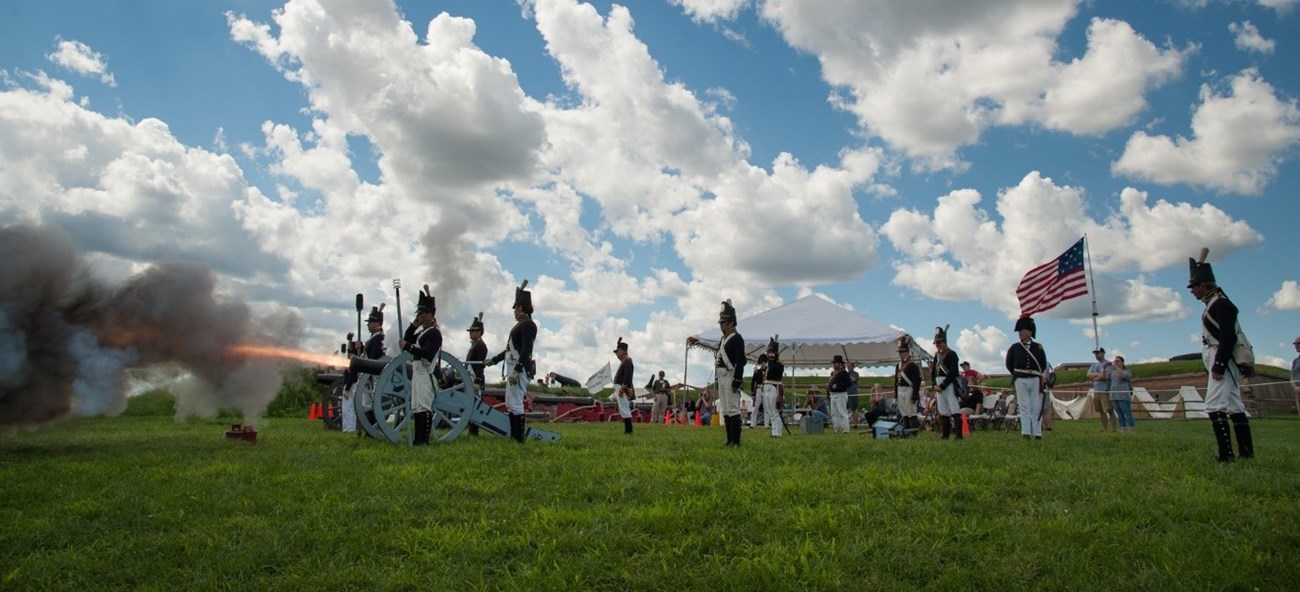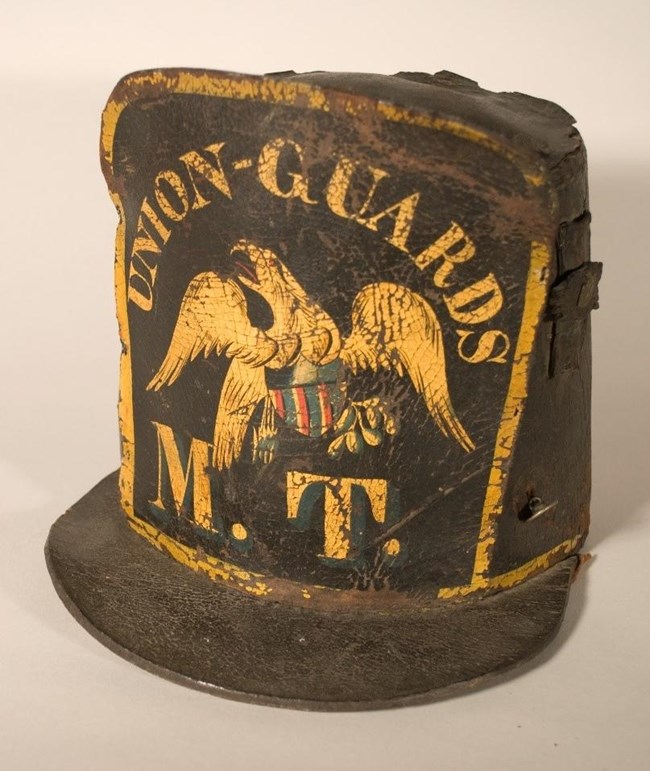
NPS A company of the Regular Army Corps of Artillery under the command of Captain Frederick Evans garrisoned at Fort McHenry and played a major role in the defense of Baltimore. Organized as the Regiment of Artillery at Fort McHenry in July 1810, the company was re-designated in May 1814. This company included about 90 men who volunteered to serve their young nation in the War of 1812. Some men joined out of patriotic pride, the need for employment, or the allure of the promised 160 acres land bounty. Whatever their reasoning for joining, the men proved their dedication during the relentless bombardment of Fort McHenry. 
NPS The enlisted men in Captain Evan’s company of the Corps of Artillery hailed from diverse working-class backgrounds, previously working as laborers, tailors, shoemakers, bakers and bricklayers. Many of the men were young adults in their twenties and thirties, but the youngest in Evan’s company was only 15 years old. About one third of the company were immigrants born outside of the United States in places such as Ireland, Norway, or the Madeira Islands. For them, the land bounty may have been even more enticing as a chance to establish themselves in their new country. Earning a wage of eight dollars per month, or 27 cents per day, the defenders did not make a lot of money, even by contemporary standards. Surely many questioned if it was worth it, manning the artillery and unable to hit the enemy as the shells rained down throughout the battle. Yet, every man stood their post. After the battle, Major Armistead commended the actions of every soldier. 
NPS/Harpers Ferry Center During the Battle the artillerists under Captain Evans were stationed at the star fort’s bastions, manning the 24-pound cannons which provided fire at all angles around the fort. One of the main tasks of an artillery soldier was firing and caring for the cannons. Soldiers drilled long and hard, until they could load and fire the guns four times in one minute. Cannon firing was a dangerous job and men often lost their hearing from the frequent, loud cannon blasts. There was always the possibility that a cannon might explode, killing the crew members. During the Battle of Baltimore, a shell dismounted one of Fort McHenry’s 24-pound cannon. The resulting explosion killed Lieutenant Levi Clagett and wounded several soldiers. |
Last updated: September 10, 2020
